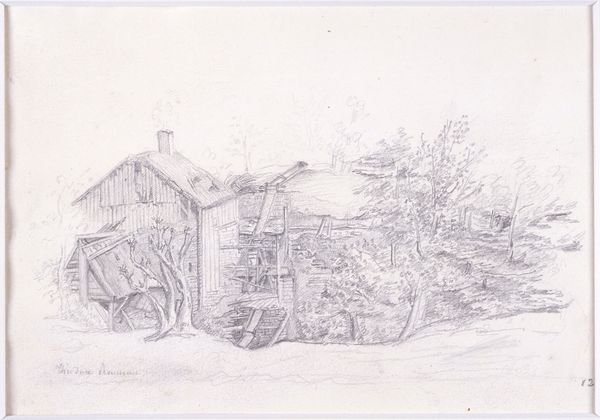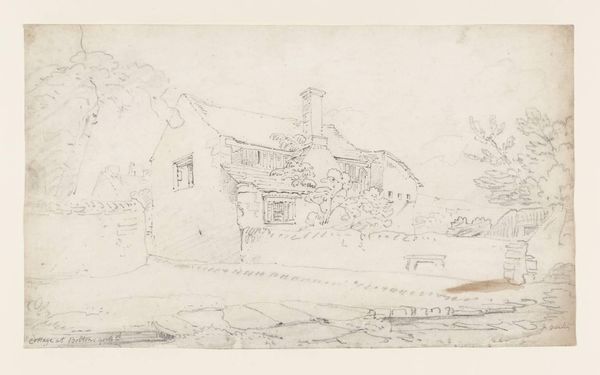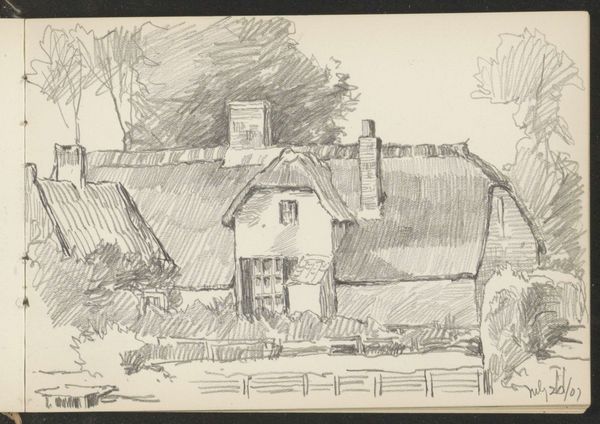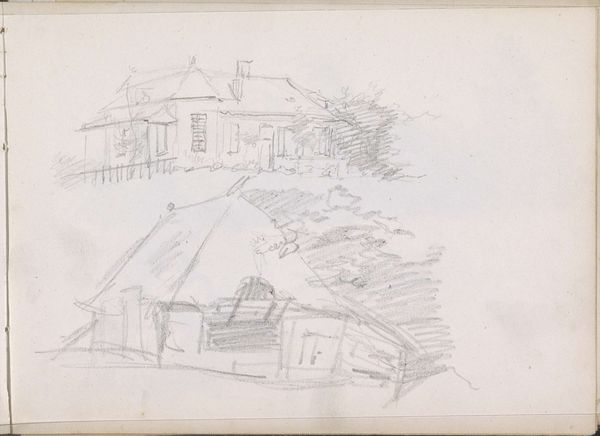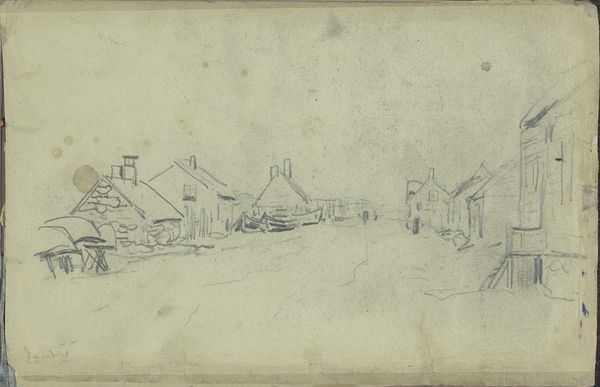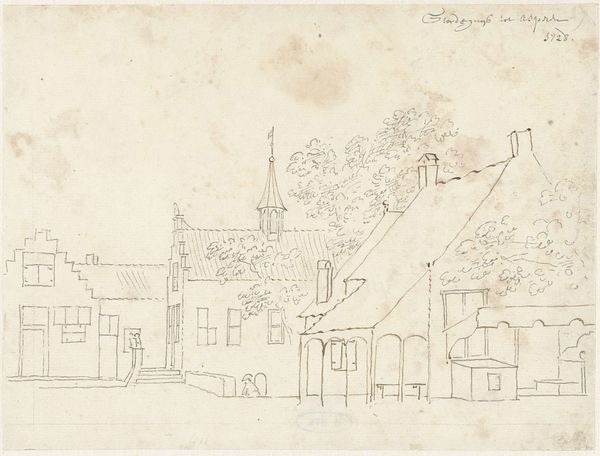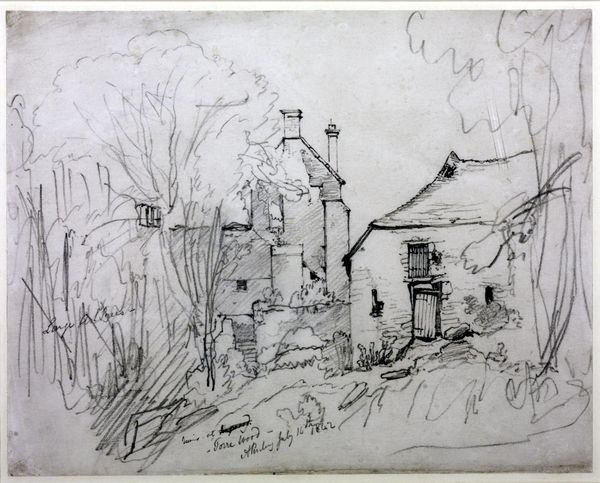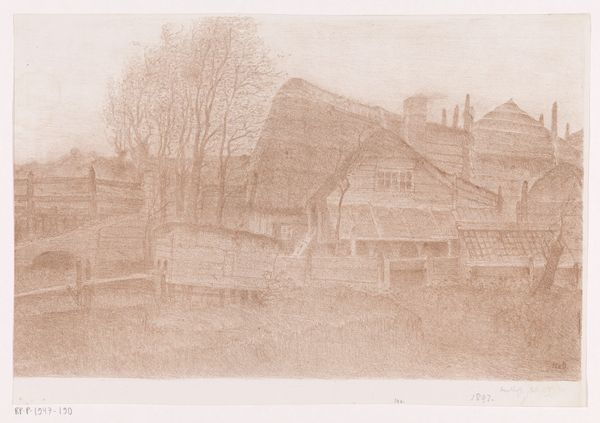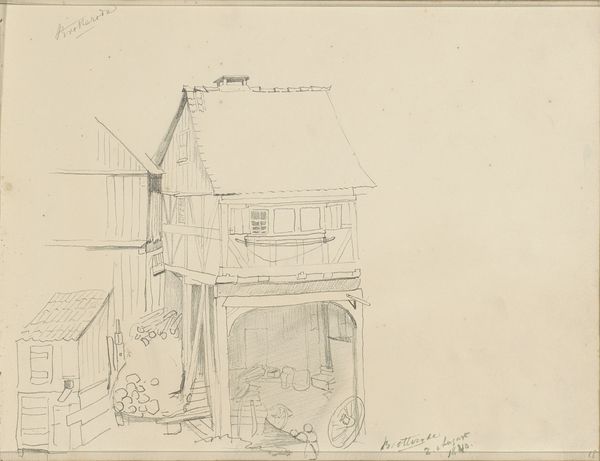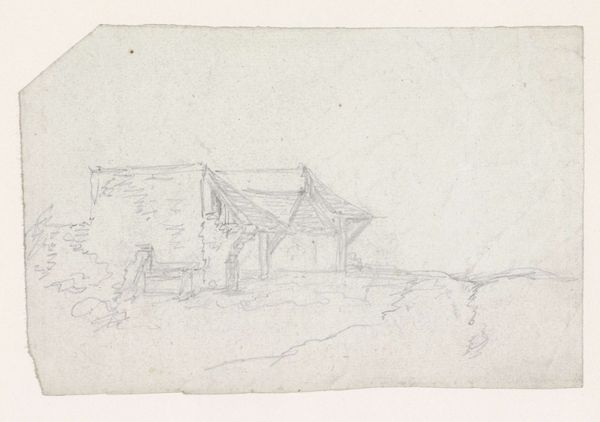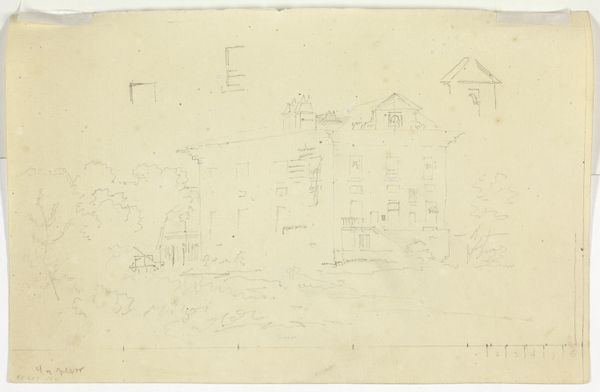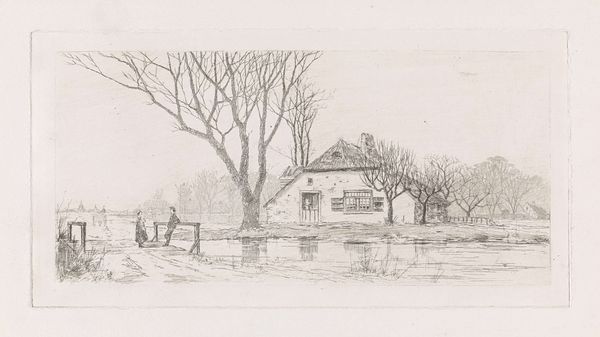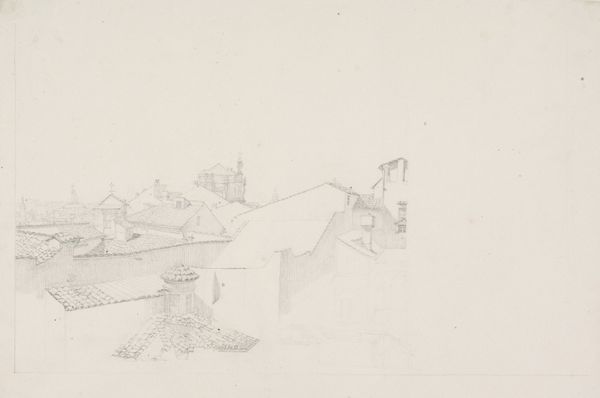
drawing, pencil
#
drawing
#
landscape
#
romanticism
#
pencil
#
cityscape
#
realism
Dimensions: 6 9/16 x 8 3/8 in. (16.67 x 21.27 cm)
Copyright: Public Domain
Editor: This is "Sawmill," a pencil drawing created around 1825 by Theodore Rousseau. There's something about its unassuming simplicity that draws me in, a focus on the industrial structure itself. What aspects of the drawing strike you? Curator: The pencil drawing is very interesting considering the Romantic era’s emphasis on nature and emotion. Rousseau is presenting us with the material reality of resource extraction. He gives the means of production its due, highlighting how human activity shapes our interaction with, even domination over, the natural world. What is created, and how? Editor: So you're saying that rather than just seeing a pretty landscape, Rousseau wants us to consider the sawmill as a place of work and modification of natural resources. Does the medium - pencil - influence that perspective in any way? Curator: Precisely! Pencil, often associated with sketching or preliminary work, signals that the making and labour are at play in the creative process. Consider, also, where the raw material originates. The trees are gone, transformed by tools and labor into planks that fueled 19th century industrialisation. It's almost a snapshot of pre-industrial work being impacted by machinery. Editor: I see! So it's not just about the finished product, but also about what went into creating it – the labour and the resources, right? And how even a simple drawing with a humble material like pencil can spark questions about wider systems of work. Curator: Absolutely. Now consider how consumer demands then contribute to such spaces now... perhaps we have come full circle to question what the artist observed in the material, its context and origins.
Comments
No comments
Be the first to comment and join the conversation on the ultimate creative platform.
